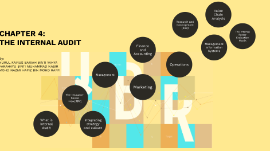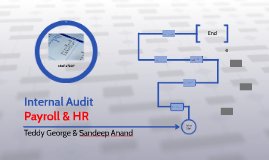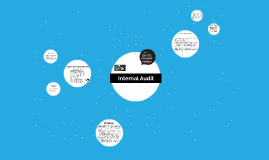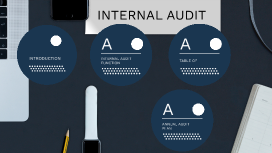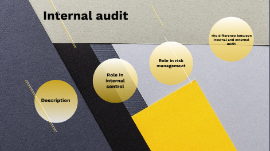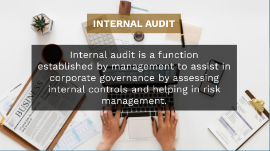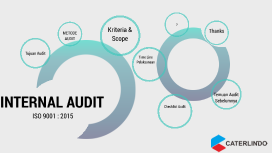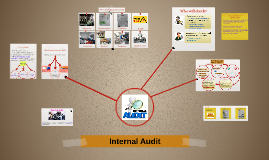internal audit
Transcript: By: NURUL FAIRUS BARIAH BINTI YAHYA FARAHAYU BINTI MUHAMMAD NASIR MOHD NAZMI HAFIZ BIN MOHD RAFFI CHAPTER 4: THE INTERNAL AUDIT internal audit is the examination, monitoring and analysis of activities related to a company's operations, including its business structure, employee behavior and information systems What is Internal Audit What is Internal Audit Distinctive competencies is a firm's strengths that cannot be easily matched or imitated by competitors Building competitive advantages involves taking advantage of distinctive competencies Key Internal forces Key Internal forces Internal audit requires gathering,assimilating and prioritizing information about firm’s Management marketing Financing/accounting Production/operations Research and development Management information system operations Provides more opportunity for employee to understand how their job and departments fit into whole firm Process of performing an internal audit Process of performing an internal audit The resource-based view[RBV] The resource-based view[RBV] Internal resources are important than external factor for firm in achieving and sustaining competitive advantage RBV theory help firm exploit opportunity and neutralize threats Physical resources Physical resources Plant and equipment,location, technology,raw material,machines. Human resources Human resources Employee,training,experience, intelligence, knowledge, skill,abilities Organizational resources Organizational resources Firm structure,planning process,information systems,patents,trademarks,copyrights,databases Empirical Indicators Empirical Indicators The more a resources is rare,nonimitable and nonsubstitutable, the stronger a firm’s competitive advantage and longer it will last Rare resources are the resources that other firms do not possess or own In order to obtain competitive advantage, it is more advantageous if the resources are rare Rare Rare Difficult to copy the product or resourse that company own Hard to imitate Hard to imitate When there are no viable are no substitutes, a firm will be able to sustain its competitive advantage If the competitors cannot perfectly imitate the firm resources,it can obtain a sustainable competitive resources subtitutes Not easily substitutable Not easily substitutable Integrating strategy and culture Integrating strategy and culture Organizational culture defined as a pattern of behavior that has been developed by organization as it learn to cope with problem of external adaptation and internal integration Organizational culture that shape a workplace because culture can represent a major strength or weakness for the firm Cultural Products Cultural Products Values Beliefs Rites Rituals Ceremonies Myths Stories Legends Sagas Language Metaphors Symbols Folktales Heroes and heroines Aspects of Organizational Culture Aspects of Organizational Culture Management Management The functions of management consist of five basic activities staffing motivating planning organizing controlling Planning Planning Planning consists of all those managerial activities related to preparing for the future. Task like forecasting, establishing objectives, devising strategies, and developing policies Organizing Organizing Organizing includes all those managerial activities that result in a structure of task and authority relationships specific area include organizational design, job specialization, job descriptions, span of control, coordination, job design, and job analysis Motivating Motivating Motivating involves efforts directed toward shaping human behavior. Specific topics include leadership, communication, work groups, behavior modification, delegation of authority, job enrichment, job satisfaction, needs fulfillment, organizational change, employee morale, and managerial morale Staffing refers to human resource (HR) activities al so include wage and salary administration, employee benefits, interviewing, hiring, firing, training, management development, employee safety, equal employment opportunity, and union relations Staffing Staffing Controlling refers to all those managerial activities directed toward ensuring that actual results are consistent with planned results. Key areas of concern include quality control, financial control, sales control, inventory control, expense control, analysis of variances, rewards, and sanctions Controlling Controlling Management Audit Checklist of Questions Management Audit Checklist of Questions The process of defining, anticipating, creating, and fulfilling customers’ needs and wants for products and services Marketing Marketing the examination and evaluation of consumer needs, desires, and wants involves administering customer surveys, analyzing consumer information, evaluating market positioning strategies, developing customer profiles, and determining optimal market segmentation strategies Customer analysis Customer analysis includes many marketing activities, such as advertising, sales promotion, publicity,






